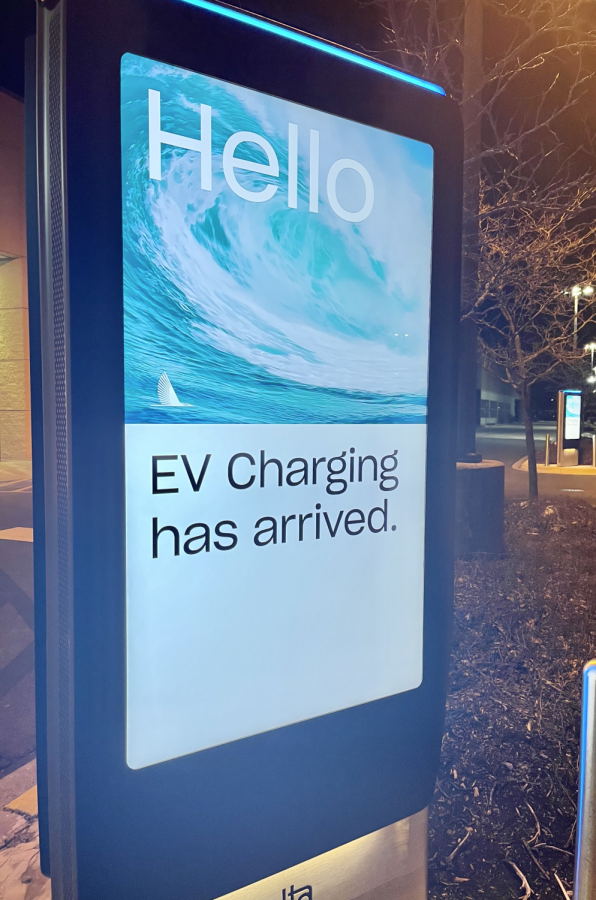Electric Does Not Equal Renewable
Super Bowl commercials and the Biden administration are making electrical vehicles more appealing—but are they the environmental heroes some make them out to be?
February 20, 2023
Jeep, Dodge and General Motors’ Super Bowl commercials this year are a reminder that the automotive industry is going electric. The dancing bear, bee and elephants a friend group encounters on their joyride through a savanna in Jeep’s commercial are a reminder of the environmental benefits of this trend. However, the adoption of electric vehicles (EVs) and plug-in hybrids requires an increase in world electricity generation, and a majority of the world and the United States’ electricity is generated by fossil fuels. For EVs to have the full positive impact they’re capable of, companies, consumers and policymakers must make decisions to ensure EVs are charged using renewable energy.
In China, the primary source of electricity is coal. A 2016 study by Tsinghua University found the electricity generation needed to fuel the increasing number of EVs in China contributed more to smog than gasoline engine cars.
In the United States, natural gas is the largest source of electricity. Natural gas is also a fossil fuel whose use emits carbon dioxide, contributing to climate change, albeit less than coal. Natural gas also emits less carbon and fewer polluting particles than gasoline. So, if you charge your EV where the electricity is derived from natural gas, it is cleaner than driving a gasoline engine car. But there are parts of the country where coal still provides almost all electricity, including the city of Naperville, Ill.

The source of an EV’s electricity ultimately relies on the existing electrical grid in the location you charge the vehicle. The cleaner the grid is, the cleaner your charge will be.
Some companies are taking steps to support cleaner grids. The largest public EV charging network in the United States, EVgo, purchases renewable energy certificates (RECs) to match all the electricity used by their charging stations. The purchase of RECs allows companies to call the energy they use renewable. While this does not ensure EV owners are charging their vehicles directly with renewable energy, the purchase of RECs supports the generation of renewable energy and can decrease demand for fossil fuels.
As explained on EnergySage’s website, “A REC is produced when a renewable energy source generates one megawatt-hour (MWh) of electricity and delivers it to the grid. For example, if a wind power facility produces 5 MWh of electricity, they have 5 credits to either keep or sell.”
As a participant in the California Air Resource Board Low Carbon Fuel Standard, Ford generates or buys an equivalent amount of RECs to the energy used by its consumers through at-home EV charging, if consumers opt-in.
While I admire these actions, I take issue with the way some companies frame them. At least for me, a company calling themselves carbon-neutral brings to mind solar panels on their headquarters and a wind farm somewhere nearby sending them power—not purchasing REC’s that prove someone, somewhere is generating renewable energy.
When I see an advertisement that features a group of friends charging their Jeep on a mountain alongside a dancing goat, I honestly want to be them. But through the promotion of certain actions, including purchasing EVs, it seems companies are trying, directly or subliminally, to convince consumers that individual acts of consumption will save the climate. British Petroleum (BP) did this in the early 2000s when they invented the carbon footprint, creating the illusion that individuals are responsible for the emissions caused by the production of the goods and services they use.
I believe that EVs are progress, but not as much progress as some are being led to believe. And I think well-meaning adopters can help their vehicles reach their full potential by charging their EV as cleanly as possible and contributing to the renewable energy market, since they have the opportunity to make that difference. But I also believe they should do their own research on what contribution personal vehicles really have to climate change in order to have a realistic perception of the scale of their actions’ impact.
A 2019 article by Brady Jones for Medill Reports Chicago explains options for charging your EV cleanly. One is charging at home during the times of day when your electric company uses renewables such as solar and wind the most. They should be able to share this information upon request, but these times could overlap with when you need to drive your car.
The most reliable and straightforward way to charge an EV with direct, 100% renewable energy is producing the energy independently. This can be done by installing solar panels. Rebates, tax incentives and solar cooperatives can make installing panels more affordable, bringing the cost to about $12,000 in the United States, on average, according to a breakdown by Consumer Affairs.
The fact that the energy charging your EV is most likely reliant on whatever energy companies have a monopoly in your area reinforces the fact that it is large, wealthy organizations who must be pushed to reform our energy infrastructure to make truly impactful changes on the climate issues so many EV buyers are concerned about.
Along with growing concerns about the climate, the accessibility and capabilities of EVs are increasing. Price ranges on EVs and plug-in hybrids are widening, and the network of public chargers has been expanding for years, accommodating the concerns of those who drive long distances. On Feb. 15, the Biden administration announced a plan to have 500,000 EV chargers along U.S. roads and highways by 2030 (more than four times the current amount). The switch to an EV is becoming feasible for more people.
As a road trip-loving, aimless drive-taking American living in the suburbs, I’m in my car a lot. And I’d eagerly go for a plug-in hybrid if I needed to replace it, because I believe small actions are better than doing nothing about a problem. But as I study public relations and advertising, I’m pushed to question the motives behind anyone trying to sell something, and car manufacturers are trying to sell something. Some of the rhetoric around personal EVs along with the secrecy around exact sources of electricity feels misleading and deceptive.
While switching to an EV in the United States is usually cleaner than using gasoline, terminology like “zero-emissions,” which refers to tailpipe emissions, may confuse some into thinking their use of an EV is inherently completely carbon-neutral. But the average person’s electricity is not generated through carbon-neutral means. To make a difference with an EV, know the source of its energy.



















Rob • Feb 21, 2023 at 10:40 am
People also do not think of the emissions produced during the manufacturing process of an EV. Nor do they think what will happen to the non-recyclable batteries of an EV when they need replacement or if the vehicle is totaled in an accident. As far as an EV being fossil fuel free, aren’t Tesla body panels made of plastic?